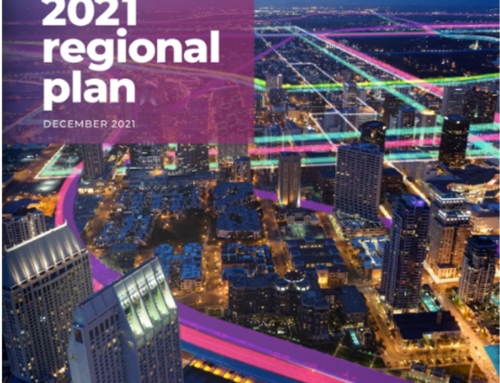By John Atcheson
When the Intergovernmental Panel on Climate Change (IPCC) makes a projection about how much time we have before hitting a target temperature increase, one of the most important assumptions they use is a “carbon budget”. Carbon Tracker defines “carbon budget” as: The cumulative amount of carbon dioxide (CO2) emissions permitted over a period of time to keep within a certain temperature threshold.
Glossary of Terms and Definitions that appear in this article:
(Given in the order they appear)
Intergovernmental Panel On Climate Change (IPCC): The IPCC is an international organization of the United Nations whose objective is to provide governments at all levels with scientific information that they can use to develop climate policies. IPCC reports are also a key input into international climate change negotiations. The IPCC data used to model and forecast climate is used at the local, state, national and international level.
Anthropogenic: Originating in human activity.
Carbon sinks and sources: For purposes of climate change, a carbon sink is something that removes carbon from the atmosphere, a carbon source is something that adds it. Sources and sinks may be natural or anthropogenic.
Carbon sequestration: The act of a carbon sink removing carbon from the atmosphere.
Albedo effect: A measure of the amount of solar radiation reflected from a receiving body. It is important in climate studies because the polar ice caps work to lower the net amount of heat energy that is retained in the atmosphere, and as they darken or diminish, the Earth retains more heat.
Understanding carbon budgets is critical if you want to understand the IPCC forecasts in their full context. So, OK, buckle up, this is going to get pretty wonky, but once you’re familiar with carbon budgets, you’ll be equipped to understand the sometimes troubling assumptions that are hidden in the IPCC reports as well as other forecasts.
There are three factors that determine a carbon budget:
- The cumulative amount of carbon released to date;
- The sensitivity of the climate to carbon; and
- The likelihood of the outcome.
Let’s look at each in turn.
The amount of carbon emitted to date can be computed, although there is some controversy over what year to use as a baseline, or even whether to use models to compute the pre-anthropogenic carbon level, instead of historical data. The IPCC typically uses 1850 to 1900 as the baseline, despite the fact that anthropogenic emissions of carbon have been increasing since the mid 1700’s.
Climate sensitivity is a measure of how much warming a given amount of carbon will cause. Estimates have varied over time as more data becomes available and as techniques for measuring it are improved and this can make a big difference in forecasts. In fact, in the latest IPCC report on 1.5 C of warming, changes in the assumptions about climate sensitivity extended our drop-dead date for action from three years of current emissions to about ten. The justification for the change is that the IPCC found that cumulatively, more carbon had been emitted than previously estimated which means – because it took more carbon to cause the 1 C we’ve warmed already – the climate is not as sensitive to a given amount of carbon as we previously thought. As we’ll discuss, this works only if the past is prologue.
The other factor – the likelihood of the outcome can also profoundly change the allowable carbon emissions and the time left to act under a given scenario. For example, the IPCC’s forecasts are usually based on what they call a “likely” outcome, which is the amount of carbon emissions that 66 percent of their models say will allow us to stay at or under a given temperature threshold. So right off the bat, it’s important to know that the safety margin built into the IPCC forecasts is effectively a two out of three chance of meeting the specified target. As safety factors go, this margin shouldn’t inspire confidence. Would you, for example, get on a plane or cross a bridge that had a one in three chance of failing? Makes you wonder why we’d consider it adequate for protecting our life support systems, doesn’t it?
Confused? Let’s plug in some real numbers to show how it works.
We’ll start with carbon sensitivity.
Before the IPCC adjusted their estimate of carbon sensitivity in the Special Report on Global Warming of 1.5 C, our carbon budget worked out to about 3 years’ worth of emissions left before we busted the 1.5 C limit. Here’s the numbers, using the old assumption of carbon sensitivity. If we wanted to have a 66 percent probability of staying below 1.5°C, our total carbon budget would be 2,250 tonnes of carbon dioxide. By the end of 2018, we burned through all but 130 billion tonnes of that budget. Since we are emitting about 37 tonnes per year we would have blown through the budget by the end of 2021.
But by adjusting the carbon sensitivity used in the IPCC’s 1.5 C Report, we increased the time it takes for a given amount of carbon to increase the temperature, which gave us ten more years of emissions, not three. As we noted earlier, this revision is valid only if the past were prologue. But the data suggests it won’t be. This is true for two reasons. First, carbon sinks are becoming compromised. Data suggests that soils, the ocean, marine biota, boreal forests, and rainforests – the major carbon sinks – are not taking up as much carbon as they once did, and this trend is likely to intensify. Indeed, in many areas, as fires and insects attack trees, boreal forests are becoming sources of carbon, not sinks, and this could become true of the entire boreal forest – the single largest terrestrial sink, encircling the entire globe.
Evidence for this slowdown in natural carbon sequestration is starting to pile up. For example, from 2014 through 2017 human carbon emissions plateaued, but despite the slowdown in emissions, the atmospheric carbon concentration not only continued to increase, but it accelerated at a record-breaking pace. (See Figure 1)

The other reason the past may not be prologue is that there’s evidence we’ve triggered some positive feedback loops that either 1) increase the amount of warming a given amount of carbon causes – for example, the reduced albedo of melting ice caps in the polar regions causes more heat to remain in the atmosphere– or 2) cause the release of carbon that has been sequestered in features like permafrost, methane clathrates, or peat bogs, often for centuries or longer.
Some techniques for establishing carbon sensitivity attempt to capture the equilibrium change – that is, the change in temperature once feedbacks have played out – but our estimates of feedback effects are extremely uncertain, and historically, we’ve either ignored feedbacks, or grossly underestimated their magnitude.
Now let’s look at how varying the probability of meeting a given threshold can affect the forecasts for time we have left.
Looking at an increase of 1.5 C, if we were to choose a more conservative level of risk management, such as a 90 percent or 100 percent likelihood of staying below 1.5 C, we would have had to start acting more than a decade ago, since we exceeded the allowable emissions for those confidence levels in 2013.
Contrast this with a carbon budget based on a 66 percent probability of staying below 2°C, or about 2,900 billion tonnes of carbon dioxide (GtCO2e). By the end of 2018, we would appear to have nearly 736 gigatonnes of carbon dioxide left, or about twenty years’ worth.
As we can see, the assumptions about atmospheric sensitivity, what constitutes an acceptable safety factor, and what temperature represents the target we should stay under can make the time we have left before exceeding our carbon budget vary from three years to about twenty. And many of the assumptions the IPCC is using for their base case, expose us to relatively higher risks than more realistic or prudent assumptions would.
It is tempting to choose values that give us hope, and it seems like that tendency has influenced many of our assumptions about carbon budgets. But as Kevin Andersen of the Tyndall Center put it: “Scientists must make their assumptions transparent and defensible, however politically uncomfortable the conclusions.”
History tells us people are capable of extraordinary efforts when they are faced with extraordinary challenges. But there are no examples of humans rising to meet a challenge they were unaware of, or which was understated.
The thing is, we have the tools to meet the climate challenge. Renewable energy and clean energy storage are now cheaper than fossil fuels in energy generation, and they soon will be for transportation. Agricultural practices can turn that sector from a source of carbon emissions to a sink, absorbing atmospheric carbon. But if we are to harness these solutions, we must understand the urgency of the challenge we face, and communicate that urgency to our elected officials at all levels.
Carbon budgets – get to know them. The viability of the planet’s life support systems – and the kind of future we leave our children and our children’s children depends upon us understanding how the budgets are established and insisting that scientists make prudent – not politically convenient – assumptions when we use them.



